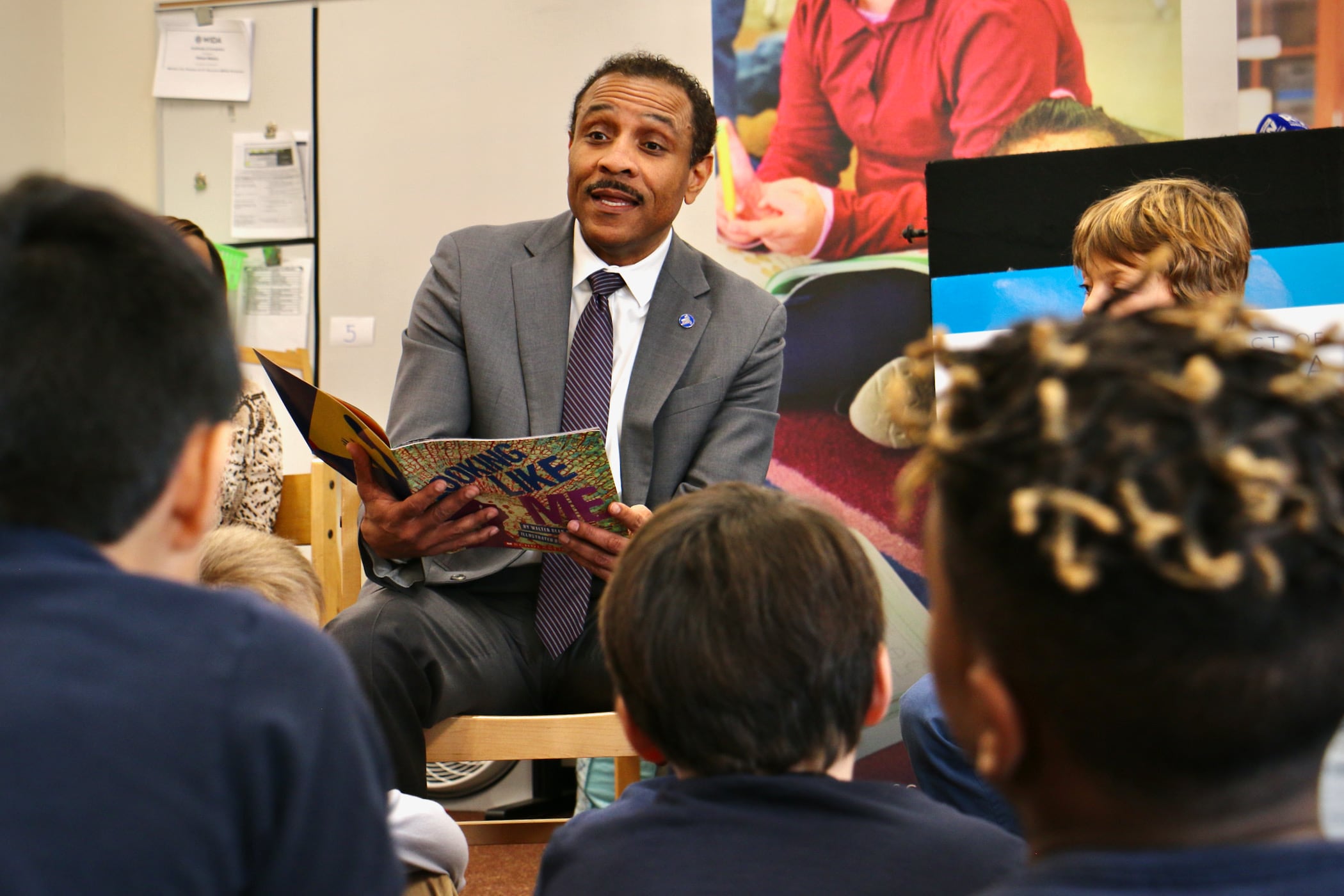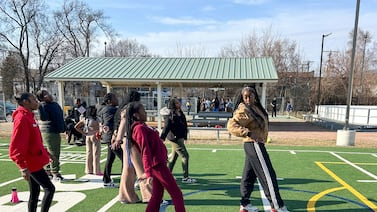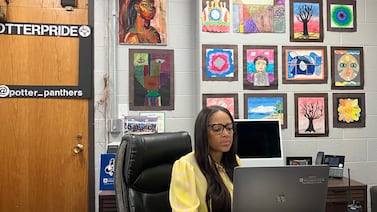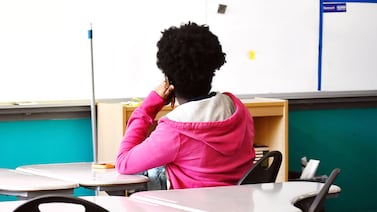Philadelphia’s top education official and its likely next mayor are coalescing around a big idea for education: year-round school. But so far, neither of them wants to say how it would work.
The most consequential and far-reaching proposal in Democratic mayoral nominee Cherelle Parker’s plan for education is to keep schools open year-round. And Superintendent Tony Watlington will include a proposal for a pilot program on year-round schools in his five-year strategic plan that is not yet public but that Board of Education members are scheduled to vote on at their May 25 meeting.
Parker and Watlington aren’t alone in their interest in shaking up the traditional school calendar. In the wake of the pandemic, several school leaders and state lawmakers are looking to extend their school years as a way to give struggling students an academic boost. Year-round school can take many forms and it is used to try to address various issues, from academics to overcrowding.
District spokesperson Marissa Orbanek said Thursday that Watlington “has included the pilot of year round schools in his five-year strategic plan, which will be presented soon.” Orbanek said that Watlington was interested in the idea before the primary election, which Parker won on Tuesday. She declined to provide further details.
In her campaign platform, Parker said she would combine the longer school year with more before and after-school activities. And her website puts more emphasis on a year-round school schedule as a way to help parents than its impact on academics. But otherwise, her platform doesn’t focus on the details of how her idea would work in practice.
“Philadelphia students need to be prepared for a modern economy, but Philadelphia’s public school system is stuck in the past,” she said on her campaign website.
A Parker spokesperson said Thursday that Parker’s team had not seen Watlington’s proposal.
On Thursday, Pennsylvania Gov. Josh Shapiro told us that Watlington “shared those ideas” about year-round school with him previously, although he didn’t have any details about what Watlington would propose.
Shapiro said he is open to any “creative ideas” to address students’ mental health needs and improve learning environments including extending the school year or adjusting school start times.
“I want to be thoughtful about how we do this,” Shapiro said, “so the Commonwealth is not dictating a one-size-fits-all approach to every district, but rather allowing districts to sort of consider what they think would be best.”
Year-round schooling gets mixed reviews
Using a year-round calendar does not necessarily mean having more than 180 days of instruction, which is what the majority of states (including Pennsylvania) have set as the minimum for a school year.
The National Association of Year Round Education advocates for districts to implement the “balanced calendar,” which shortens summer vacation and adds longer breaks called “intersessions” during the school year. The group’s suggested calendar uses a 30-day summer break and breaks for fall, winter, and spring of 15 days each, plus a three-day break for Thanksgiving.
This strategy keeps 180 instructional days, but uses them “more efficiently,” said David Hornak, the association’s executive director and superintendent of the 5,000-student Holt School District in Michigan. He said about 4% of school districts educating some two million students nationwide use some form of this calendar.
After a long summer break, according to Hornak, teachers generally spend the first 20 to 40 days in school reteaching students to compensate for summer learning loss. With traditional school calendars, “schools are asked to remediate learning gaps that they are contributing to,” Hornak said.
The “balanced calendar” schedule also “improved educator morale and has a positive impact on the teacher burnout problem” as well as teacher and student attendance, he said.
“I have yet to meet an educator who wants to return to the regular calendar,” Hornak said.
The Philadelphia Federation of Teachers has declined to comment on Parker’s plan or Watlington’s pending pilot proposal. A change to year-round schooling would require the district to rework its contract with the teachers’ union; the contract expires in August 2024.
Many districts across the country have tried year-round schooling over the years, with varying levels of success.
The Los Angeles school district tried year-round schools as enrollment grew in the 1980s, but by 2015, just one school still used that type of calendar, according to Education Week.
At least a few school districts have abandoned this approach or at least cooled on the strategy recently. In January, officials in Virginia’s Chesterfield schools recommended phasing out their year-round school trial run, after disappointing academic outcomes.
And a school district in Wisconsin is also ending its year-round school calendar after nearly a decade; officials said the schedule didn’t seem to benefit test scores or student behavior.
Paul von Hippel, a professor of public policy at the University of Texas who has researched year-round schooling, said there’s evidence that adding instructional days has a positive impact. (Parker, who has a 10-year-old son, has also said the elementary school day is too short and wants to keep school buildings open from 7:30 a.m. until 6 p.m.)
But he has not seen evidence that the balanced calendar approach has led to better student outcomes.
And it’s typically very difficult for school districts to add days to the school year, even when there is a year-round calendar. Only about one in every 1,000 schools in the U.S. has calendars that stretch the school year beyond 180 days, and most of them are charters, he said.
The Los Angeles district was among several California cities that implemented a year-round schedule similar to the balanced calendar called Concept 6. That schedule had just 163 days of instruction, although the school days were longer, he said.
Research showed that students on Los Angeles’ Concept 6 schedule did not benefit academically, von Hippel said, adding that it is “disruptive of family life and teachers tend not to like it.”
There are some “high-performing education systems” elsewhere, including in England and South Korea, that have more than 200 days in the school year, he said.
But in the U.S., von Hippel said, “I don’t think you will find a large district that has gone to 200 or 210 days.”
Dale Mezzacappa is a senior writer for Chalkbeat Philadelphia, where she covers K-12 schools and early childhood education in Philadelphia. Contact Dale at dmezzacappa@chalkbeat.org.
Carly Sitrin is Philadelphia Bureau Chief and can be reached at csitrin@chalkbeat.org.






